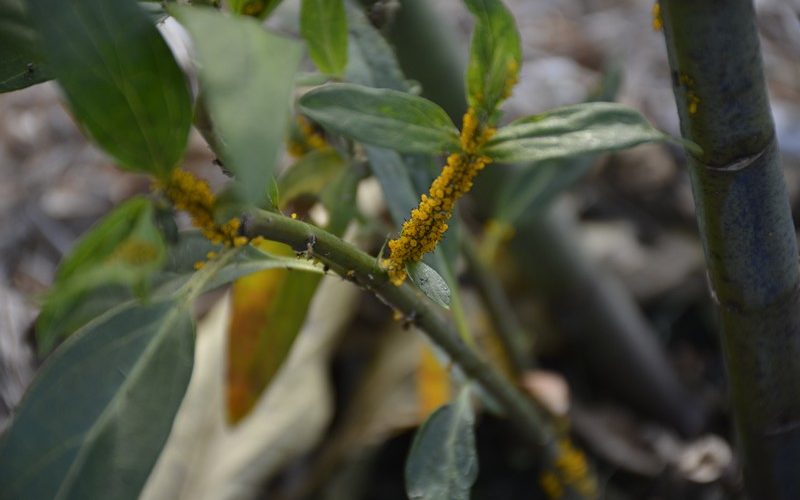Aphids and ants all part of cycle of life
AMANDA BANCROFT
Making Ripples
Ever heard of an ant farm? How about ant farmers — ants who farm! There are myriad varieties of ants, and their “farms” grow different things. One local example of this is an ant-run “aphid farm.” The ants care for patches of aphids and protect them from predators in exchange for nourishment in the form of aphid excrement. It’s a symbiotic relationship that doesn’t sound too appetizing, but benefits both species.
It does not necessarily benefit humans and other species, however. Aphids are common garden pests, and usually people want to be rid of them so their plants can grow healthy. Some aphids are especially keen to consume swamp milkweed (asclepias incarnata), which is frustrating for those trying to help the Monarch butterfly or establish a native plant nectar patch to benefit pollinators. But take heart in knowing that this is all a part of the natural life cycle.
Milkweed is good for monarchs, but many other species, too. Likewise, the presence of aphids and ants benefit their parasites (like wasps) and predators (like lady beetles), as well as insect-eating wildlife like the birds. You might observe a full food chain right in your backyard on a single milkweed stalk, from a tiny aphid parasite up through a songbird perched there to devour insects and caterpillars alike.
Just why do these industrious ants make an aphid farm, anyway? The oleander aphid, a sort of yellow-orange creature resembling a Tic Tac mint candy, produces a substance called “honeydew” which ants love. In this instance, honeydew is a far cry from the melon we humans enjoy eating. This is the aphid’s excretion after it penetrates the milkweed stalk and sucks out the liquid within, having adapted a tolerance for the poison in milkweed plants. This is the same poison which also protects the Monarch butterfly from becoming a tasty snack (but not always, because some caterpillar and butterfly predators have adapted to eat Monarchs anyway).
It can be fun to watch ants tend their little aphid patches, defend them and feed on their honeydew. Watch closely, and you can see the aphids behave like sports fans doing “the wave” — aphids which had been perfectly still suddenly twitch from one end of a group to the other, bobbing slightly.
Eliminating aphids on the milkweed plants is challenging because doing so usually eliminates everything else, but if you must make the attempt, squishing them by hand is somewhat safe. In this manner, you avoid destroying Monarch butterfly eggs. Another option is spraying the aphids with a soapy spray made with natural ingredients, but the disadvantage here is that you might spray off an egg (although you can remove them or any caterpillars first). Sometimes, everything works itself out in the garden, and nature needs no help from us. At other times, native plants and animals are decimated to the point of local extirpation or total extinction. Knowing the difference between when to help and when to let go is a lifelong mystery.
Amanda Bancroft is a writer, artist, and naturalist living in an off-grid tiny house on Kessler Mountain. She and her husband Ryan blog about their adventures and offer tips to those wanting to make a difference at www.RipplesBlog.org.










